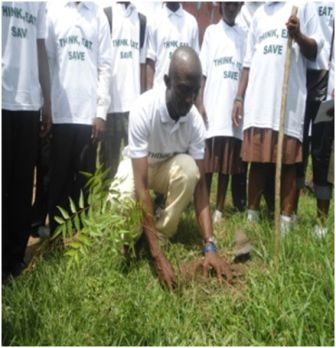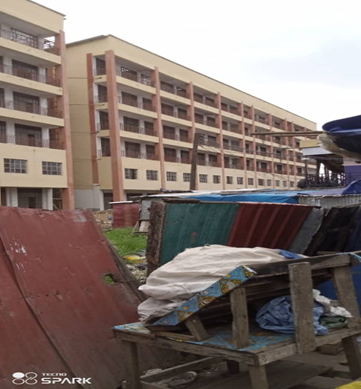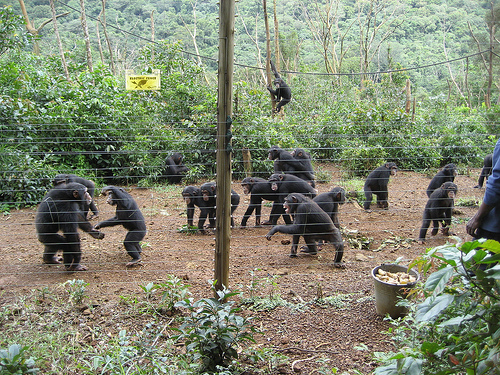Some CDR Geoengineering technologies will delight Africa
It’s the season of rain in Africa like in some parts of the world, and a time for cold winds for most of the sub-Saharan. It’s a time that farmers look forward to and a time that prices for certain commodities change. It’s also a time that communities prone to floods and erosion are chary, having memories of a recent severe experience, with thoughts for similar possibilities. (Photo Credit: carbonengineering.com)
Several writers across Africa have attributed global warming as the factor for increase in magnitude of these weather events in recent months. Storms have been severe, floods have encroached new paths and there have been dangerous levels of erosion. Climate change is many headaches for Africa and the anodyne –- adaptation –- is too expensive for most economies.
Africa wants to enter a deal along with the rest of the world to mitigate greenhouse emissions, albeit those that have accumulated over the years will continue to cause warming into the future. Africa seriously wants the world to start from somewhere, no matter how late it is.
This deal is facing hurdles coming to life, and the hurdles are beyond what can be directly faulted as insouciance by developed nations, with a history of pollution. Economic recession is a major hurdle and a little direct, but arguments as the exact role of developing nations that are also top polluters, remain an indirect, contorted, progress-unserious hurdle.
Developing nations in this category believe they should have fewer responsibilities from developed nations, given the latter’s emission history and economic pocket. They have a point, but if they don’t effectively cut from their current levels and others do, there will be small progress in average total mitigation. Hope however remain to see this hurdle detained circa 2020.
2020, according to the accord of the Durban climate meeting, is the year the world should adopt a legally binding deal -– after ratification in 2015 -– to effectively cut emissions. This, if we’ll trade on hope, is almost solved; but looking at the current emission rate in the build up to 2020 and the lifetime of greenhouse gases, some dangerous levels of emissions may be reached, causing substantial warming and devastating events. Projections are with this possibility growing thoughts to quick-fixes to save the world from substantial warming.
Climate engineering (or geoengineering) is the general name for the quick-fixes that can help the world buy time building up to absolute mitigation. There are several technologies for geoengineering and are grouped into two. Solar Radiation Management, SRM and Carbon Dioxide Removal, CDR. SRM technologies are directed to increase the reflectivity of the earth’s atmosphere or surface such that the amount of solar radiation reaching the surface or absorbed by the surface is reduced. This can be achieved by putting reflective materials in space or on the earth surface; examples are space reflectors, sulphate aerosols in the upper atmosphere, covering deserts with reflective materials and painting of roofs white.
CDR technologies are directed to remove carbon dioxide, CO2 from the atmosphere, by putting up or inducing systems to do so. Examples are direct capture of CO2 from ambient air, ocean fertilization, biochar, weathering of sedimentary rocks, reforestation & reduced deforestation, and magnetic ejection of CO2 into outer space.
These geoengineering technologies are principally science for the society initiatives to minimize the risks of climate change. They offer solutions in specified ways, are generally risky and quite expensive to deploy and maintain. Tinkering with the delicate climate system of the earth — if necessary — will be with extreme care, making geoengineering adoptable to a certain extent.
CDR technologies are mostly considered safe when outlined with SRM technologies and they deal with the root cause of global warming, CO2 emissions. Some CDR technologies enhance ecosystems, on land or in water, but an interesting one is the direct-air capture technology.
Unhappy Africa –- for no climate change deal yet — will find this interesting when deployed on ground as a means to reduce CO2 in the atmosphere. Introducing this to Africa –- usually upbeat about striking new technologies –- will see majority embrace geoengineering moderately.
Africa is not expected to buy into geoengineering, especially SRM and the controversial ocean fertilization CDR, but needs some of these technologies in another sense. Most parts of the continent need some form of SRM because of radiation stabs that sweep through cities during the dry season; excessive shortwave solar radiation and absorption by the surface are primarily responsible.
Africa may love to have something that can help reduce solar radiation reaching the ground and the amount absorbed, in a deployment that will be double, beneficial to inhabitants and against global warming. If proposed, and people link it with geoengineering, it is likely to be heckled. With ‘a first in Africa’ direct capture setup, geoengineering can further penetrate the continent.
The direct capture technology is still in developing phase and yet to be ready for sale or distribution. Africa may not acquire this soon after release, but will be a strategic placing in the geoengineering cause. Reforestation will also excite Africa in a project that will employ people, and put the works of many local researchers to use.
Biochar is another interesting technology for Africa, given its closeness to agriculture. Africa may see desert reflectivity SRM deployed within this decade, but large scale deployment of SRM won’t sit well with Africa on science and governance concerns. It is important to understand these angles, to see Africa selectively embrace geoengineering.
By David Stephen
Stay with Sierra Express Media, for your trusted place in news!
© 2012, https:. All rights reserved.





